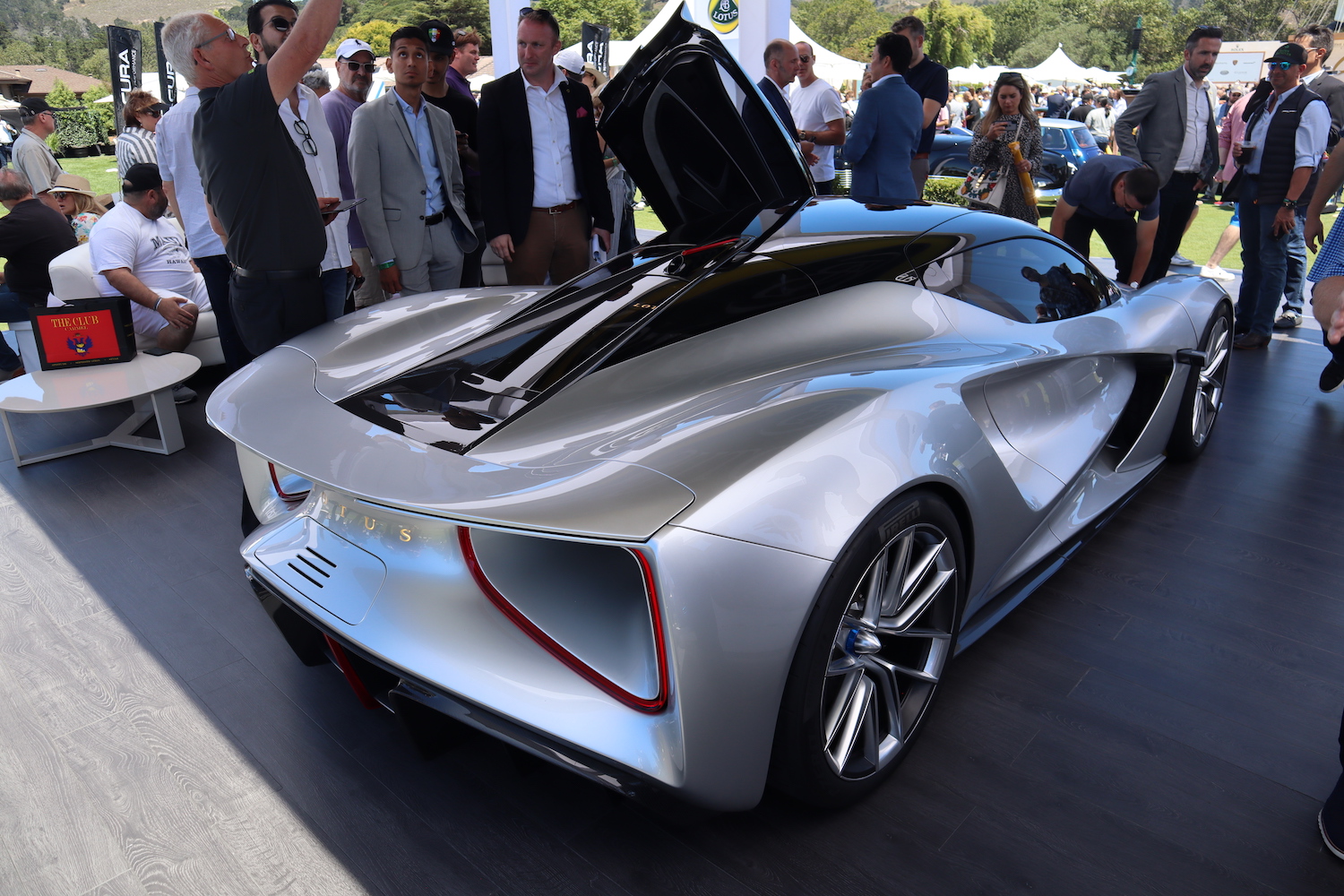
Neue Details zum Lotus Evija
Am 21. November veröffentlichte Lotus ein Video, dass das neue Elektro-Hypercar Evija in voller Aktion zeigte. Und so sehr wir Lotus Abkehr von den puristischen Traditionen auch bedauern, so scharf wirkt diese Rakete. Nun erfahren wir Neues zum 2,25 Millionen Euro-Gefährt.
Text: Jakob Stantejsky
2.000 PS aus vier Elektromotoren und 340 km/h Spitze soll der Lotus Evija bieten, wenn er (vielleicht?) nächstes Jahr schön langsam in Produktion geht. 130 Stück wollen die Briten bauen. Bedeutet einen Gesamtumsatz von 292.500.000 Euro – wahrscheinlich mehr Geld, als Lotus bisher insgesamt umgesetzt hat, geschweige denn in den letzten paar Seuchenjahren. Wenn der Evija die Marke tatsächlich rettet, soll uns die Sache sehr recht sein. Vielleicht gibt es dann auch mal wieder einen ultraleichten Benzinbruder.

Vor Kurzem hat Lotus nun sogenannte „test notes“ veröffentlicht, in denen Lotus-Mitarbeiter Gavan Kershaw seine Gedanken zu seinem kleinen Evija-Testabenteuer festhält. Keine Frage, unparteiisch sind diese Notizen sicher nicht, doch sie bieten dennoch einen spannenden Einblick in die Entwicklung des Hypercars. So schreibt Kershaw, dass der Evija mittlerweile über ein fast vollständiges Interieur verfügt, auch die Hydraulik für die aktive Aerodynamik ist schon mit an Bord. Elektronische Helferlein gibt es jedoch noch gar keine, damit der Bolide mechanisch perfekt abgestimmt werden kann. Wir werden nicht lügen: Einen Sportwagen mit 2.000 Pferden, die auch noch ab 0 Umdrehungen ihre volle Power liefern, würden wir auch gern mal ganz ohne Assistenten testen. Es muss sich wohl um ein irrwitziges Erlebnis handeln.
Alles in allem dürfte Lotus extrem darum bemüht sein, die eigenen Tugenden hochzuhalten. Das Fahrerlebnis soll direkt und ungefiltert an Lenkrad und Pedalen ankommen, nur schalten muss man eben nicht mehr. Falls ihr mehr zum Evija erfahren wollt, schaut euch doch einfach (nochmal) das Video an oder lest die kompletten Testnotizen unten nach.
Lotus Evija: dynamic test notes (G. Kershaw)
Date: 6 December 2019
Driver: Gavan Kershaw, Director, Attributes and Product Integrity, Lotus Cars
Location: Hethel, Norfolk, UK
Car: Lotus Evija engineering prototype #2
Pre-test notes:
Latest shakedown follows extensive computer simulations, plus multiple sessions in UK and Italy.
Engineering prototype #2 is the most advanced of three on test, with customer-specification suspension, EV powertrain, brakes and full carbon-fibre body panels.
Features most complete interior yet, with key elements such as production seats and ‘ski slope-style’ floating centre console in place.
Fitted with hydraulics to support deployment of car’s active aerodynamics.
Driver’s notes:
“The car is in a completely pure state at the moment, with no stability control or torque-vectoring. This is so we can evaluate the fundamentals of the chassis, to create the mechanical advantage before the other layers, such as the electronics, are added. It means we can really read the car. Later we can tune what we’ve gained as a mechanical advantage as we add layers. It’s the Lotus way – get the fundamentals right from the start and use baseline aerodynamics, suspension kinematics and geometry to feel the vehicle’s response.
I feel really at home in it, it’s really driveable. We assessed the stability and agility through tight corners. We did brisk accelerations to work out the torque split and looked at tyre grip and response.
Lotus has always been about ‘input = output’, so if you do something you get a response, and that’s what we’re balancing now. It’s all about the detail so, for example, we’re validating the progressive response from the pedals. We know there’s an enormous amount of torque but drivers will only want it when they ask for it with their right foot. It’s about getting that throttle balance right.
We assessed steering-wheel angle versus vehicle response at different speeds to ensure the car feels nimble at 30mph as well as 200mph.
Through testing like this we can work on every element, like how connected you feel to the car, the driving position, location of the primary controls and visibility. It’s all about validating how the thousands of hours of computer simulations actually translate into the vehicle. It’s a two-fold process: proving they were the correct targets in the first place, and that the results are accurately translating into the car.
It’s also about bringing in experience from other vehicles – what we know from driving Exige and Evora, the Lotus GT race cars – and making sure that core Lotus DNA is all at its absolute best in the Evija.
It’s really exciting for me. I love this part of developing any Lotus because it’s proving the mechanical design and the physics behind everything is right, and then working with our engineers to enhance the experience and give the car a true Lotus character. It’s the step-by-step stuff we do with every Lotus – Evija is no different.
It’s another chapter in my 30+ years at this company. Yes, I’ve got a big smile on my face because it’s the latest tech, it’s a Lotus and we’re at the forefront again.”





